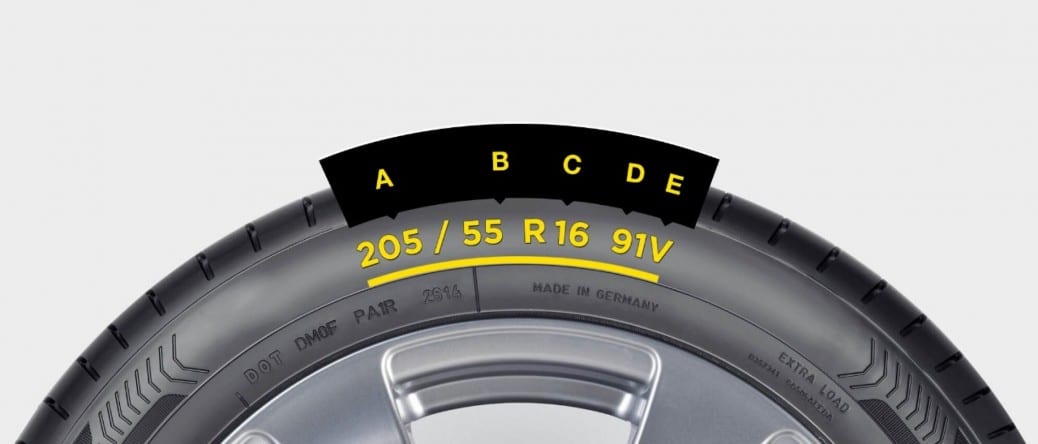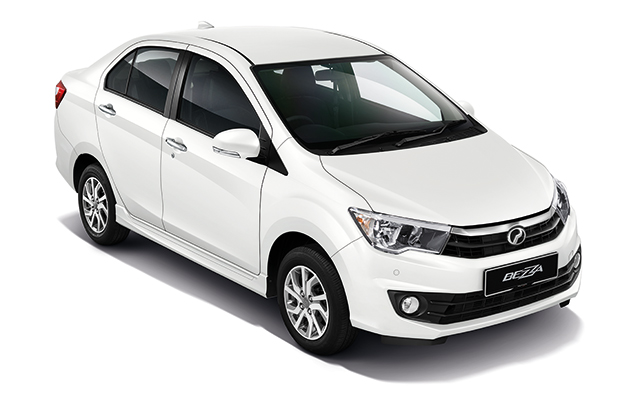As a Step Socks community, I would like to share with you on how to read the tyre spec as most Malaysian ignore this piece of knowledge. They would rather listen to the car service centre on the tyre to be suitable for their vehicle. This sharing is important especially for those who is heavily using their vehicle/car.
A. TYRE WIDTH
Width of your tyre in millimetres, measured from sidewall to sidewall.
B. ASPECT RATIO
The ratio of the tyre’s cross-section to its width, expressed as a percentage. An aspect ratio of 65, for example, indicates that the tyre’s height is 65% of its width.
C. WHEEL DIAMETER
The diameter (height) of the wheel in inches.
D. LOAD INDEX
Your tyre’s load index relates to its maximum carrying capacity (in kg). You’ll find the load rating of your tyre on the sidewall, just to the right of the diameter.
For example, a tyre with a load index of 91 can carry 615kg of weight.
Load ratings and speed ratings should be looked at together when you buy a new tyre. Also remember to check your manufacturer’s recommendations.
E. SPEED RATING
The speed rating is the maximum speed for a tyre when it is correctly inflated and being used under load. The speed rating is the letter at the end of the sidewall, after the load index number. A tyre with a speed rating of V, for example, has a maximum speed of 240 km/h.
When buying new tyres, make sure you match their speed rating with the speed capabilities of your vehicle.
Example On How To Read Tyre Spec for Malaysian Tyre:
205/65R15 95H
205 indicates the nominal section width of the tyre in millimetres (205mm).
65 indicates its aspect ratio, a comparison of the tyre’s section height with its section width (65 indicates the height is 65% of its width).
R indicates radial ply construction.
15 indicates the nominal diameter of the wheel rim (15 inches).
95H is a symbol indicating the maximum load capacity and speed at which the tyre can be safely operated, subject to the tyre being in sound condition, correctly fitted, and with recommended inflation pressures (95 represents a maximum load of 690kg per tyre; H represents a maximum speed of 210km/h).
HIGHER LOAD INDEXES AND DIFFERENT SPEED RATINGS
It may be possible to fit tyres with higher load indexes and different speed ratings to those indicated in your vehicle’s manufacturer documentation.
However, always check first in your vehicle’s manufacturer documentation if these tyres may be mounted on your vehicle and if using these tyres is permitted under your local laws and regulations. You should also comply with all applicable requirements of your local laws and regulations and not exceed the specifications of these tyres as well as those indicated in your vehicle’s manufacturer documentation in terms of speed and load. Your dealer may help you verifying this before purchasing or fitting tyres.
Is it possible to fit tyres with a higher speed rating than my manufacturer recommends?
Yes, this may be possible. However, always check first in your vehicle’s manufacturer documentation if these tyres may be mounted on your vehicle.
Is it possible to fit tyres with a higher load index than my manufacturer recommends?
Yes, this may be possible. However, always check first in your vehicle’s manufacturer documentation if these tyres may be mounted on your vehicle.
Is it possible to fit tyres with a higher speed rating and a higher load index than my manufacturer recommends?
Yes, this may be possible. However, always check first in your vehicle’s manufacturer documentation if these tyres may be mounted on your vehicle.
Is it possible to fit tyres with a lower speed rating than my manufacturer recommends?
Yes, you can use all-season or winter (M+S) tyres that have a lower speed rating so long as: a) a sticker that shows the maximum speed limit is in the driver’s field of vision and b) you don’t drive the vehicle faster than the maximum speed limit. However, always check first in your vehicle’s manufacturer documentation if these tyres may be mounted on your vehicle.
Is it possible to fit tyres with a higher load index and a lower speed rating than my manufacturer recommends?
Yes, you can fit tyres that have a higher load index and a lower speed rating.
You can use all-season or winter (M+S) tyres that have a lower speed rating so long as:
a) a sticker that shows the maximum speed limit is in the driver’s field of vision and
b) you don’t drive the vehicle faster than the maximum speed limit.
However, always check first in your vehicle’s manufacturer documentation if these tyres may be mounted on your vehicle.
WARNING
Check your vehicle owner’s manual to determine the load limits. Overloading your vehicle places stress on your tyres and other critical vehicle components. It can cause poor handling, increased fuel consumption and may cause tyre failure. It can also result in severe cracking, component separation or a “blowout.”








